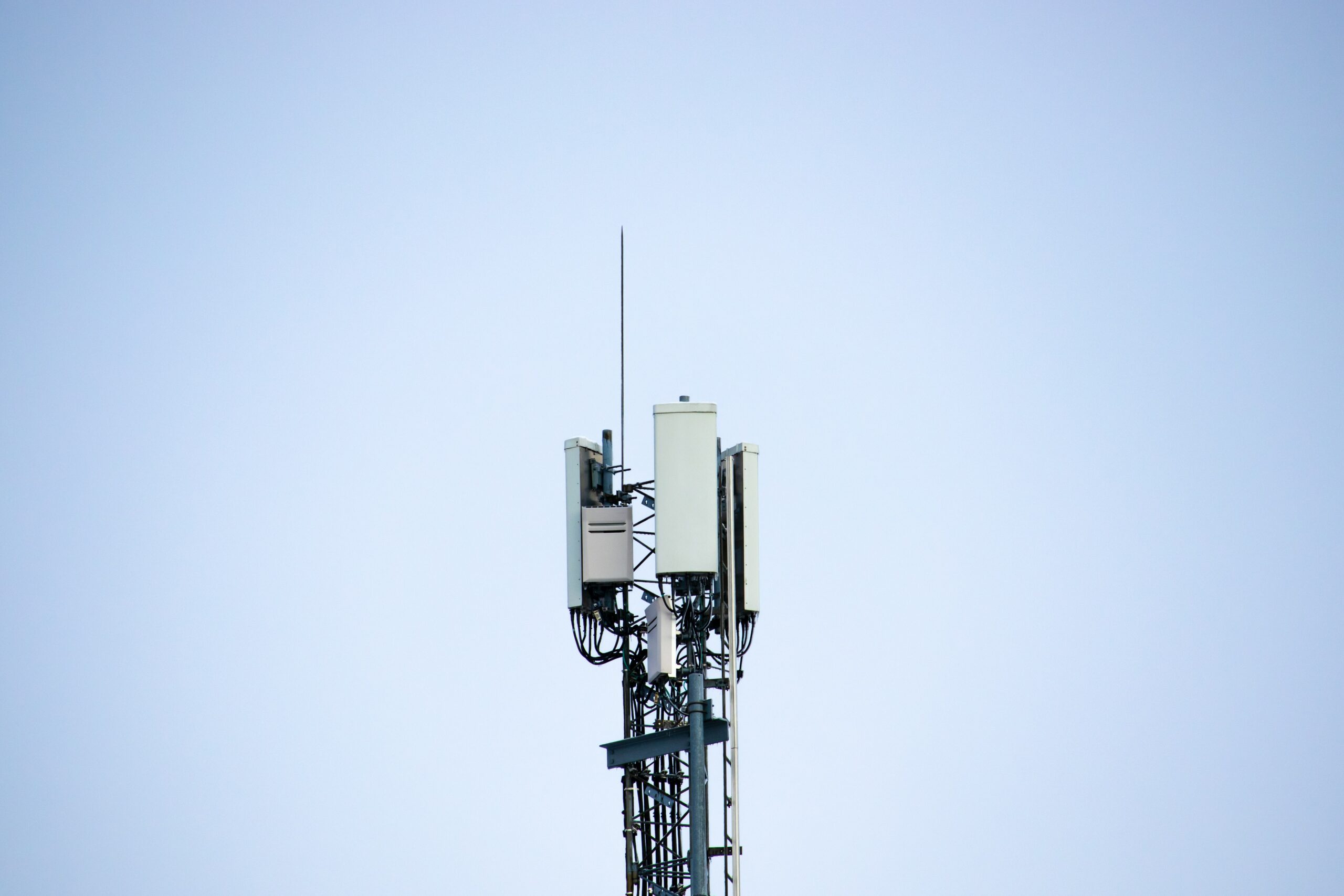As the IoT landscape grows more complex, making the right decisions for your project can be daunting. And no pressure, but when it comes to connectivity options, selecting the right cellular module is crucial. With the choice between building or buying, you need to weigh several factors, including your project requirements, budget, resources, and timeline.
If you’re making that choice now, this article is your go-to guide. We’ll delve into the important factors and provide you with the context you need to make an informed decision. Let’s get started!
What is a cellular module?
So you’ve compared connectivity options for your IoT project, decided on cellular, and now you need a cellular module – well done! But what exactly is a cellular module?
Essentially, it’s the hardware component that enables wireless communication between your device and the internet. The module includes a modem, RF antenna, chipset, and other supporting circuitry, and connects to a cellular network such as AT&T, T-Mobile, or Verizon. This provides the necessary bridge between your device and the cloud-based applications or other devices that it needs to communicate with.

Cellular System-on-Module from Blues
Entering the build vs buy debate
One of the earliest and biggest decisions you might face in your IoT project is whether to build your own cellular module or purchase a pre-built one from a vendor. Building your own module can provide greater control and customization, but it requires significant time, resources, and expertise, resulting in higher short-term costs. On the other hand, buying a pre-built module can offer faster time-to-market, lower development costs, and potentially better performance due to the vendor’s expertise and resources, but it may limit your customization options.
| Benefits | Challenges | |
|---|---|---|
| Build | - Control and customization of BOM (Build of Materials) - Meeting any specialized requirements - Integration of sensor packages and other hardware required in project | - Slower time to market - High cost per unit and TCO (Total Cost of Ownership) - Expertise and added complexity - Resource heavy - Must manage - Meeting certification requirements, especially by carriers |
| Buy | - Accelerated time to market - Low cost per unit and TCO (Total Cost of Ownership) - Reduced complexity - Fewer resources - Nothing to manage - Pre-certified | - Little control and customization of BOM (Build of Materials) - May not meet specialized requirements - Lacks integration of sensor packages and other hardware required in project |
To make the best decision for your organization, you need to carefully evaluate factors such as project requirements, cost, time-to-market, technical expertise, and timeline. By considering these factors, you can make an informed decision that aligns with your unique circumstances and helps you achieve success in your IoT project.
What are the IoT project requirements for building a cellular module?
In general, building a cellular module can be a good option only if you have highly specific project requirements, as well as the budget, time, and access to required resources.
Some instances that might require a custom cellular module:
- highly customized device that cannot be supported by any off-the-shelf modules
- complete control over the firmware and software and need to code everything in-house
- ultra-low power consumption
- specific form factors
- specific connectivity needs
- Specialized sensor packages
Do your research though, because you can often find many of these in pre-built modules.

How much would it cost to build a cellular module?
While building a cellular module offers complete control over the design and functionality, it is an extensive design project that requires a significant investment of time, effort, and money. The average costs associated with building a cellular module can vary widely, depending on the complexity of the project, the number of components required, and the level of customization needed.
As laid out in this IoT For All article covering the topic, “designing a cellular module requires intense work on all four of these elements”:
- Hardware Design: sourcing third-party modems, antennas, and microcontrollers, which can cost tens of thousands of dollars*.
- Firmware Development: requiring expertise in modem drivers, encryption technologies, and data formats.
- Cloud Development: requiring defining and integrating the back-end system for data storage and remote updates.
- Carrier Certification: most carriers/telcos require hardware that is in their network to be certified. Not doing so can mean devices being booted off the network, and lack of support from the carrier.
- Carrier Integration: deciding on a carrier and SIM – contract lock-ins and data rates can be cost-prohibitive.
* Not to mention the additional costs of integration, optimization, and certification for regulatory compliance.
In addition to the material costs of building the components, the time and effort of a highly specialized team required to execute these tasks adds a considerable expense to the project.
Gartner projected that 75% of IoT projects will take about twice as long as initially planned and a great portion will fail at the pre-launch stage and a lot of this can be attributed to the unexpected complexity of building an IoT solution.
How many engineers does it take to build a cellular module?
That is not the beginning of a joke, building a cellular module is a complex undertaking that requires a team of specialists from different engineering fields.
Depending on the scope and complexity of the project, the number of engineers needed can vary, but in general, you will want to have the following experts on your team:
- Electrical engineers, who design and develop the hardware of the module, including the circuitry, power supply, and antennas.
- Firmware engineers, who write and maintain the software that runs on the cellular module throughout its lifetime.
- Cloud engineers, who ensure that the IoT device and cellular module function seamlessly with cloud-based services, including data storage and analysis.
- Mechanical engineers, who design the physical enclosure and packaging for the module, ensuring that it meets your product’s aesthetic and functional requirements.
To manage the project and ensure that it stays on track, you will also need a project manager who can coordinate the efforts of the different teams and ensure that the project is completed on time and within budget. The size and composition of your team will depend on the complexity of your project and the level of expertise required to achieve your goals.
How long does it take to build and certify a cellular module?
Building a cellular module from scratch can take months or even years to complete. Much of that depends on the complexity of the module, the experience and resources of the engineering team, and the regulatory requirements of the target markets. However, it’s essential to ensure that the final product meets regulatory requirements and performs flawlessly prior to deployment.
It’s worth noting that testing and certification are still required, regardless of whether you build or buy a cellular module. These can add significant expense and time to the project. By working with a module supplier that has already completed some of the necessary certifications, such as PTCRB, carrier, or FCC (in the US), you can reduce your time to market and ensure regulatory compliance.
So when is it actually better to build a cellular module?
There’s no one-size-fits-all answer for deciding whether to build or buy a cellular module. If you’re looking for a highly customized IoT device that can’t be supported by any off-the-shelf module, then building your own cellular module might be the best option. With complete control over the firmware and software running on the device, you can create unique features and capabilities that are tailored to your specific needs.
But, building a cellular module is not for the faint-hearted – it’s a better option for businesses who have the scale and resources to justify the challenging process.

When is it better to buy a cellular module?
For the majority of use cases, buying a cellular module is the better option. By buying off-the-shelf modules, you can save time, reduce risk, and integrate easily with your project. For most businesses, partnering with an IoT module provider is a more cost-effective way of adding cellular connectivity to their IoT products.
Consider buying if:
- Your project doesn’t require highly specialized functionality.
- You’re dealing with tight schedules or lack of expertise.
- You’re not willing to go through the expensive, complex, and time-consuming certification process.
Reliable, flexible, and cost-effective cellular modules with pre-provisioned network access, eSIMs, ultra-low power management firmware, and even prepaid connectivity through MVNOs are readily available. It’s just a matter of budget and needs.
How much does it cost to buy a cellular module?
When it comes to the actual cost, a basic economy cellular module can be relatively inexpensive, ranging from $10-30, with a more advanced and feature-rich module costing up to $100 or more.
Multiple factors can affect the price of a module, including but not limited to:
- Brand: well-known brands can charge more.
- Cellular network: the technology the module is designed for, such as LTE-M, NB-IoT, or 3G/4G/5G.
- Certifications: pre-certified modules can be more expensive but save you time and money.
- Security: built-in features that make it harder for data to be stolen or corrupted.
- Quantity ordered: bulk purchases may offer discounts or special pricing.
- Technical support: some charge a premium for ongoing product support before and after deployment.
Before making a decision, it’s important to take a closer look at the capabilities of a cellular module vs. your needs, and compare pricing from different providers to ensure you get the best value and features for your project.

What else can you get with a module supplier?
On day one of your IoT project, you need to be thinking about deployment and scaling, so find a supplier who is capable of providing solutions at scale. Buying the right module not only makes building a device easier, but also the cloud integration, and commissioning. Some solutions to look for are hardware auto-provisions to the cell carrier, a software layer that offloads the data straight to the cloud, easy data egress (output) to the platform of your choice (either cloud, on-premise, or hybrid), and more.
Making the decision to buy or build a cellular module
While IoT engineers have the necessary expertise to design and align features with specific use cases, building every element from scratch isn’t always the best approach. The complexity of cellular connectivity and the modules that create these connections require extensive knowledge in hardware design, firmware development, cloud development, and MVNO carrier integration.
The smarter choice for most use cases is to opt for a pre-built module. By partnering with a trusted IoT module provider, you can focus on enhancing user applications and device features that customers experience firsthand, rather than worrying about cellular connectivity and module design complexities.
Don’t let the complexities of cellular connectivity and module design hold you back. Contact our team of IoT experts to learn more about selecting the right cellular module for your project.



